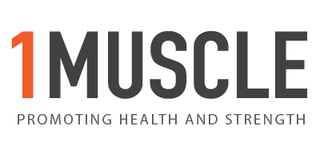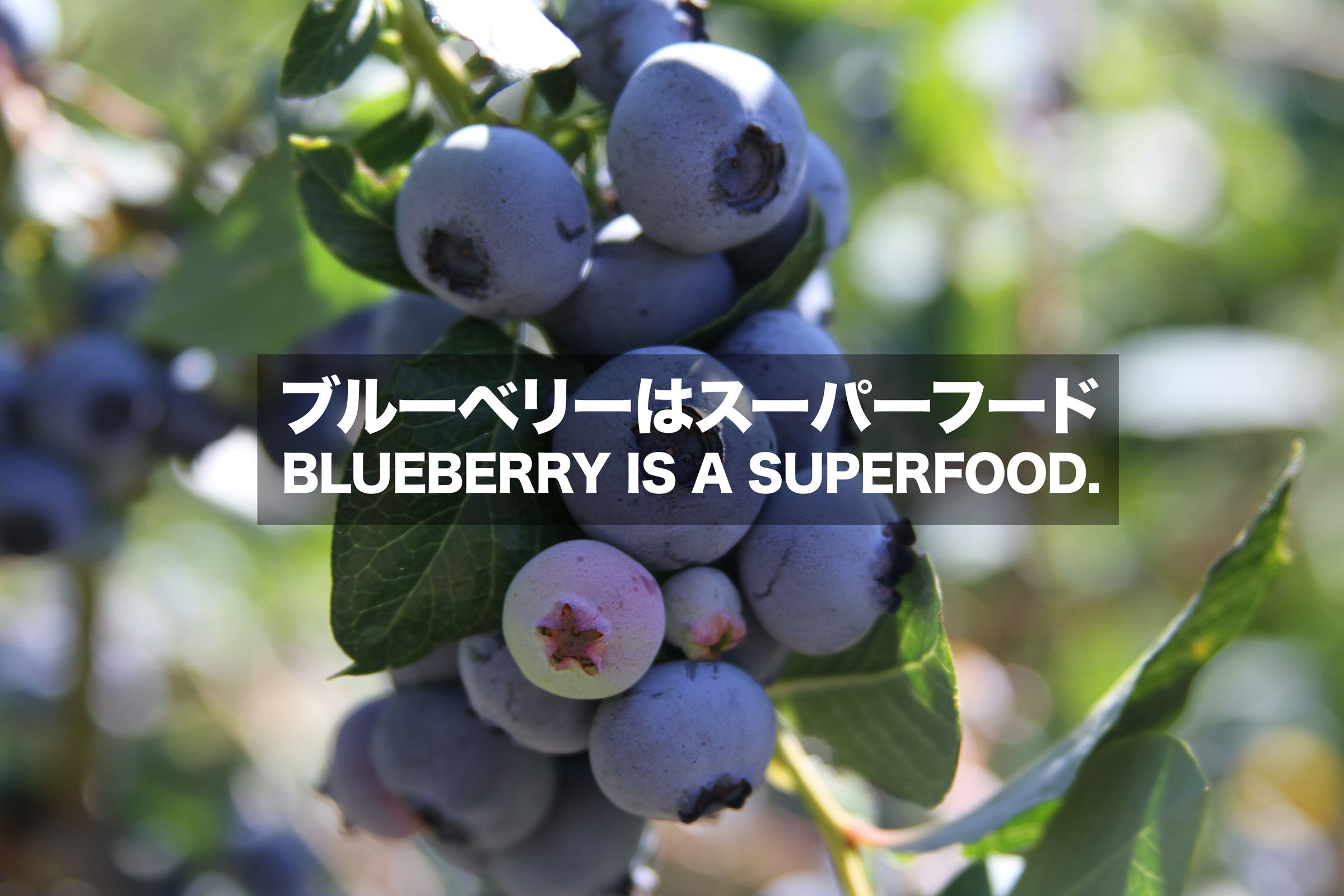ブルーベリーはスーパーフード
スーパーフードとは一面的には通常の食事における食材としての意義を超え栄養療法的な「効能」が明らかに確認されている食材を指す。
LDLの抗酸化
LDLコレステロールは悪玉と言われているが、LDLが肝臓で作られる際に十分に抗酸化物質とくっついて血中に出た場合はLDLが酸化され難くなり内膜(血管)での炎症が抑制される。
ブルーベリーやベリー類を摂るとLDLの酸化が抑えられることはよく知られている。[1, 2]
心臓血管疾患リスクの低減
LDLの酸化が抑えられると心臓血管疾患のリスクが下がる。
ブルーベリーと心疾患リスクの低減は観察研究などからも支持されている。[3]
比較的長期(6ヶ月間)にわたるRCT研究でも毎日1カップ相当のブルーベリーパウダー(26g、フリーズドライされたもの)を摂ることで心臓血管疾患リスクが12~15%下がると結論されている。[4]
ブルーベリーパウダーが使用されたのは、実際のブルーベリーを使用すると本物とプラシーボ(偽薬)の区別がついてしまうからだ。

認知能力
ブルーベリージュース(体重70キロにつき約600ml)を毎日12週間飲み続けた高齢者では、認知能力、学習能力が上がり、またうつの症状、および血糖値の状態も改善されたとの結果が出た。[5]
この実験で特筆すべきはワイルド・ブルーベリージュースは市販のジュースであるということだ。
しかもこのジュースは冷凍ブルーベリーから造られている。
他にもブルーベリーが高齢者における認知能力を改善するという研究は多い。[6]
また最近では年齢に関わらず認知能力を向上させるとする意見も聞かれる。[7]
インスリン感受性向上
ブルーベリーの抗酸化力は即ち抗炎症性である。
インスリン抵抗性は炎症によってもたらされるという理論に基づくと、ブルーベリーの抗炎症性によりインスリン感受性が改善されてしかるべきだ。
インスリン感受性向上は2型糖尿病リスクの低減を意味する。
実際、動物実験では高脂肪食を与えてもブルーベリーを与えた群ではインスリン抵抗性が抑えられることが確認されている。[8, 9, 10]
肥満防止効果は?
インスリン感受性の向上は糖代謝能力の向上である。
糖代謝能力の向上には多くの恩恵があるが、その一つは肥満防止効果である。
ブルーベリーの肥満防止効果に関してはラットの肝臓と腹部における脂肪酸の生成を抑えることが確認されている。[11]
ヒトにおいてもメタボ症候群の解消にブルーベリーが期待されているが実験では体重やウェストサイズが減ったりする結果にはまだ結びついていない。[12]
腸内細菌叢改善
ブルーベリーの抗炎症作用は腸内細菌叢の改善によってもたらされている部分もある。
それはマウス実験でも明らかであるし[13, 14]、ヒトを対象としたパイロット研究でも示唆されている。[15]
もちろんコーヒーやお茶のポリフェノールが腸内細菌叢を改善することは周知であるためブルーベリーが似たような影響をもたらすことは予想がつく。
DNA保護
DNAのダメージは日常的に起きている。
DNAのダメージは老化の一原因であることは間違いない。
ブルーベリーがDNAのダメージを抑えるという研究はヒトを対象にしたものが結構出てきた。[16, 17, 18]
中でもMTHFR(メチレンテトラヒドロ葉酸還元酵素)遺伝子のハイパーメチル化抑制においてはビタミンCよりも強力であることが示されているのは興味深い。[17]
MTHFR遺伝子のハイパーメチル化は2型糖尿病における合併症など広範な炎症性に関連がある。[19]
この研究[17]でも使用されたのはブルーベリージュース240mlであるからブルーベリー果実そのものの効力はかなりのものと考えられる。

がんのリスクへの影響は?
ODC(オルニチン脱炭酸酵素)は細胞増殖のマーカーであり、この酵素の活性上昇はがんに関連していると考えられている。[20, 21, 22]
しばしば、ODCは活性酸素によって誘導され[23]、果物から抽出された抗酸化物質はODCの発現を抑えるため、将来的にがんの抑制に利用出来ると考える研究者は多い。[1, 24]
備考:クランベリー
クランベリーは真っ赤な実が印象的であるが、ブルーベリーで有名なプロアントシアニジンの含有量が最も多い。[25]
それ故、抗酸化力やそれに伴う作用も強力なものとなる。
ブルーベリーの利用法
このようにブルーベリーはまさにスーパーフードと呼ばれるべき抗酸化食品だ。
ブルーベリーは有機農法もしくは自然農法のものをある程度大量に買い、冷凍して少しづつ使用するのが得策だろう。
(堀江 俊之)

(出典)
1. Neto, Catherine C. "Cranberry and blueberry: evidence for protective effects against cancer and vascular diseases." Molecular nutrition & food research 51.6 (2007): 652-664.
2. Heinonen, I. Marina, Anne S. Meyer, and Edwin N. Frankel. "Antioxidant activity of berry phenolics on human low-density lipoprotein and liposome oxidation." Journal of agricultural and food chemistry 46.10 (1998): 4107-4112.
3. Wood, Eleanor, et al. "Blueberries and cardiovascular disease prevention." Food & function 10.12 (2019): 7621-7633.
4. Curtis, Peter J., et al. "Blueberries improve biomarkers of cardiometabolic function in participants with metabolic syndrome―results from a 6-month, double-blind, randomized controlled trial." The American journal of clinical nutrition 109.6 (2019): 1535-1545.
5. Krikorian, Robert, et al. "Blueberry supplementation improves memory in older adults." Journal of agricultural and food chemistry 58.7 (2010): 3996-4000.
6. Bowtell, Joanna L., et al. "Enhanced task-related brain activation and resting perfusion in healthy older adults after chronic blueberry supplementation." Applied Physiology, Nutrition, and Metabolism 42.7 (2017): 773-779.
7. Bell, Lynne, and Claire M. Williams. "Blueberry benefits to cognitive function across the lifespan." International Journal of Food Sciences and Nutrition (2020): 1-3.
8. DeFuria, Jason, et al. "Dietary blueberry attenuates whole-body insulin resistance in high fat-fed mice by reducing adipocyte death and its inflammatory sequelae." The Journal of nutrition 139.8 (2009): 1510-1516.
9. Lee, Sunhye, et al. "Blueberry supplementation influences the gut microbiota, inflammation, and insulin resistance in high-fat-diet–fed rats." The Journal of nutrition 148.2 (2018): 209-219.
10. Seymour, E. Mitchell, et al. "Blueberry intake alters skeletal muscle and adipose tissue peroxisome proliferator-activated receptor activity and reduces insulin resistance in obese rats." Journal of Medicinal Food 14.12 (2011): 1511-1518.
11. Vendrame, Stefano, et al. "Wild blueberry (Vaccinium angustifolium)-enriched diet improves dyslipidaemia and modulates the expression of genes related to lipid metabolism in obese Zucker rats." British Journal of Nutrition 111.2 (2014): 194-200.
12. Shi, Min, et al. "Blueberry as a source of bioactive compounds for the treatment of obesity, type 2 diabetes and chronic inflammation." Journal of Functional Foods 30 (2017): 16-29.
13. Guo, Jielong, et al. "Blueberry extract improves obesity through regulation of the gut microbiota and bile acids via pathways involving FXR and TGR5." Iscience 19 (2019): 676-690.
14. Yan, Zhiqiang, et al. "Blueberry Attenuates Liver Fibrosis, Protects Intestinal Epithelial Barrier, and Maintains Gut Microbiota Homeostasis." Canadian Journal of Gastroenterology and Hepatology 2019 (2019)
15. Ntemiri, Alexandra, et al. "Whole Blueberry and Isolated Polyphenol-Rich Fractions Modulate Specific Gut Microbes in an In Vitro Colon Model and in a Pilot Study in Human Consumers." Nutrients 12.9 (2020): 2800.
16. Del Bo, Cristian, et al. "A single portion of blueberry (Vaccinium corymbosum L) improves protection against DNA damage but not vascular function in healthy male volunteers." Nutrition Research 33.3 (2013): 220-227.
17. Kim, Minju, et al. "Comparison of blueberry (Vaccinium spp.) and vitamin C via antioxidative and epigenetic effects in human." Journal of cancer prevention 22.3 (2017): 174.
18. Ma, Luyao, et al. "Molecular mechanism and health role of functional ingredients in blueberry for chronic disease in human beings." International journal of molecular sciences 19.9 (2018): 2785.
19. dos Santos Nunes, Mayara Karla, et al. "Hypermethylation in the promoter of the MTHFR gene is associated with diabetic complications and biochemical indicators." Diabetology & metabolic syndrome 9.1 (2017): 1-9.
20. Westin, Thomas, et al. "Evaluation of ornithine decarboxylase activity as a marker for tumor growth rate in malignant tumors." The American journal of surgery 162.4 (1991): 288-293.
21. Adey, W. R. "Cell membranes: The electromagnetic environment and cancer promotion." Neurochemical Research 13.7 (1988): 671-677.
22. Bachrach, U., Wang, YC. Cancer therapy and prevention by green tea: role of ornithine decarboxylase. Amino Acids 22, 1–13 (2002). https://doi.org/10.1007/s726-002-8197-9
23. 叶社房, 小屋佐久次, and 松崎茂. "Ferric Nitrilotriacetate により誘導されるラットの肝臓および腎臓オルニチン脱炭酸酵素活性に対する松寿仙の阻害効果." The KITAKANTO Medical Journal 53.2 (2003): 143-148.
24. Bomser, J., et al. "In vitro anticancer activity of fruit extracts from Vaccinium species." Planta medica 62.03 (1996): 212-216.
25. Bhagwat, Seema, David Haytowitz, and R. Prior. "USDA database for the proanthocyanidin content of selected foods, release 2." US Department of Agriculture, Agricultural Service, Nutrient Data Laboratory: Beltsville, MD, USA (2015).

